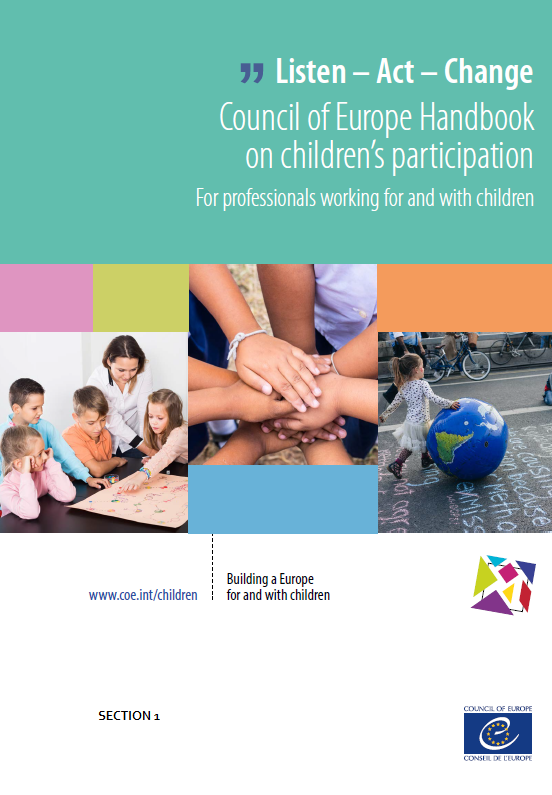Handbook on Children's Participation Section 1 - Understanding children's participation in theory and practice
Description
This section of the Handbook will help professionals who work in education, health, alternative care, child protection, immigration and asylum, family support and pre-school services to understand what is meant by the term “children’s participation” and the important role they can play in taking children’s views into account in decisions. The section explains the principles and concepts that inform the practice, process, quality and forms of meaningful, ethical and sustainable participation.
Date
List people or organisations involved in producing the resource
Council of Europe
Purpose
Theory to Practice (models and frameworks)
Age range of target people
0-8 years
9-12 years
13-15 years
16-18 years
Characteristics of children and groups
All children
Care experience
Living in poverty
Living with violence
Living rurally
Living in a city
Contact with the criminal justice system
Young carers
Refugees, asylum seekers, undocumented migrants
Ethnic, religious, linguistic minorities
LGBTQI+
Roma, Sinti, Travellers
Persons with disabilities
Boys
Girls
Modes of participation
Consultative
Collaborative
Child-led
Phases in cycle of participation
Planning
Connecting with Children
Identifying Issues and Priorities
Investigating Children's Views
Taking Action
Following-up on Actions
Evaluating and Sharing
